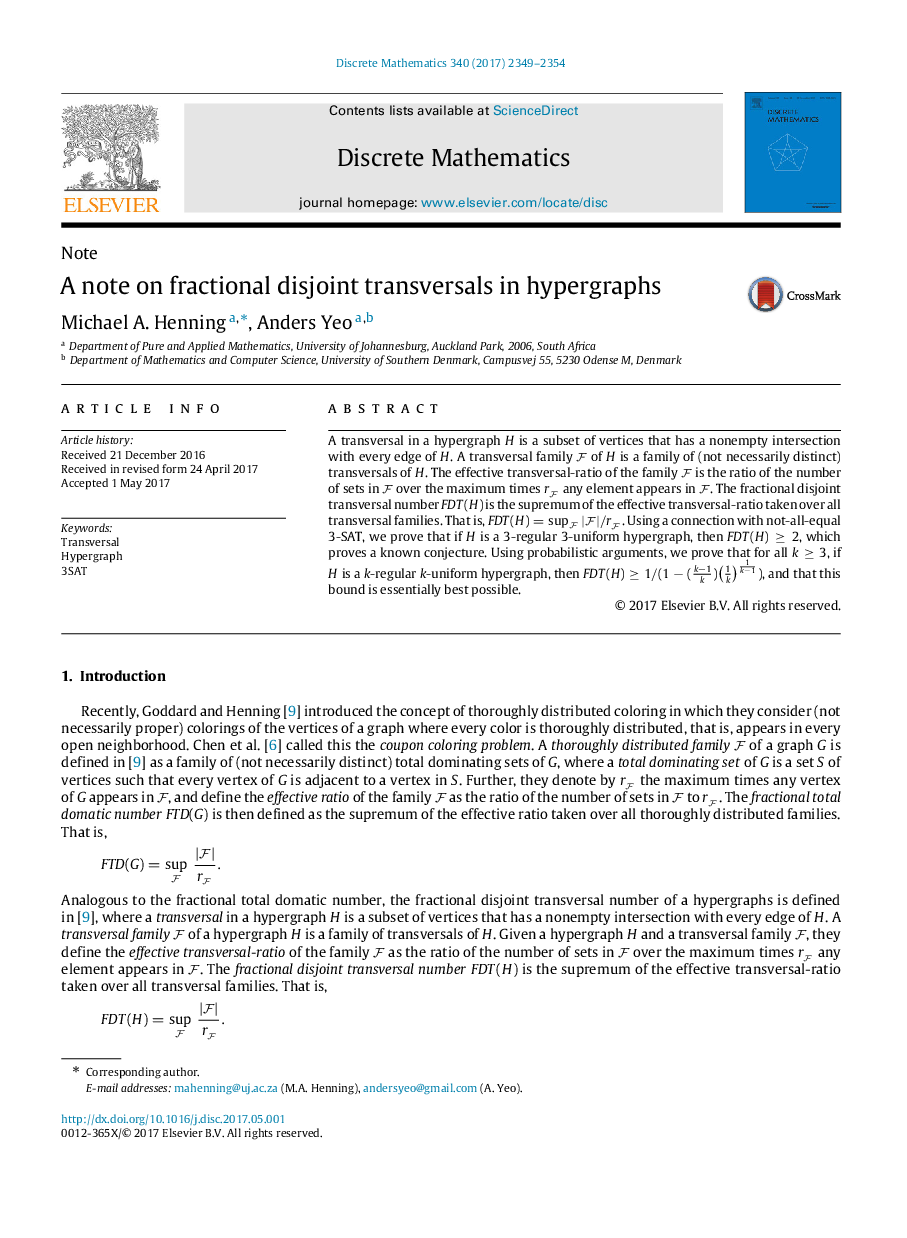| Article ID | Journal | Published Year | Pages | File Type |
|---|---|---|---|---|
| 5776864 | Discrete Mathematics | 2017 | 6 Pages |
Abstract
A transversal in a hypergraph H is a subset of vertices that has a nonempty intersection with every edge of H. A transversal family F of H is a family of (not necessarily distinct) transversals of H. The effective transversal-ratio of the family F is the ratio of the number of sets in F over the maximum times rF any element appears in F. The fractional disjoint transversal number FDT(H) is the supremum of the effective transversal-ratio taken over all transversal families. That is, FDT(H)=supF|F|ârF. Using a connection with not-all-equal 3-SAT, we prove that if H is a 3-regular 3-uniform hypergraph, then FDT(H)â¥2, which proves a known conjecture. Using probabilistic arguments, we prove that for all kâ¥3, if H is a k-regular k-uniform hypergraph, then FDT(H)â¥1â(1â(kâ1k)1k1kâ1), and that this bound is essentially best possible.
Keywords
Related Topics
Physical Sciences and Engineering
Mathematics
Discrete Mathematics and Combinatorics
Authors
Michael A. Henning, Anders Yeo,
